This winter, keep your driveway, walkways and porch safe with a combination of ice melt and regular cleaning.
Our editors and experts handpick every product we feature. We may earn a commission from your purchases.Learn more.
This winter, keep your driveway, walkways and porch safe with a combination of ice melt and regular cleaning.
Our editors and experts handpick every product we feature. We may earn a commission from your purchases.Learn more.
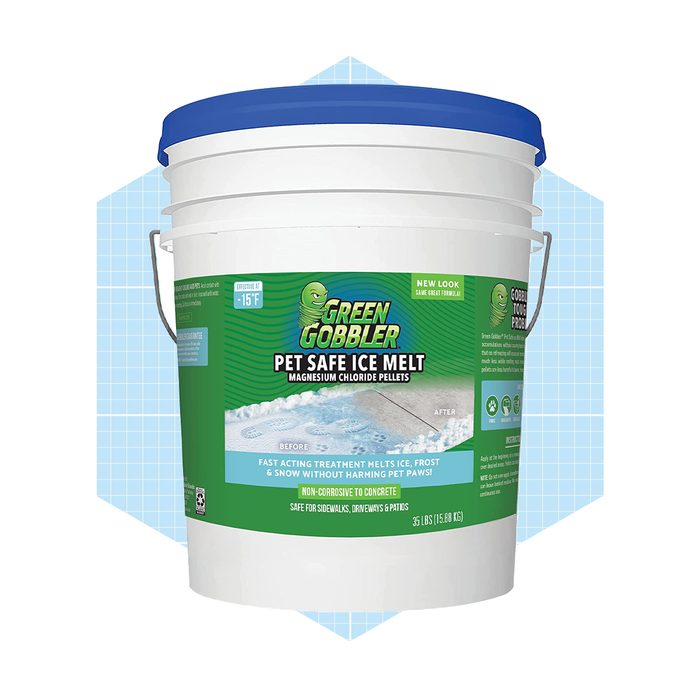 via merchant
via merchant
We love this Green Gobbler Ice Melt that won’t harm plants, paws or cause breakage on driveways. While no ice melt is totally harmless to pets (especially if ingested), this one is highly unlikely to burn or irritate skin and paws.
Most importantly, it’ll melt snow and ice in temperatures as low as minus-10 degrees Fahrenheit. It also comes in bulk sizes, which can help keep costs down if you anticipate using quite a bit of ice melt this season.
Pros
Cons
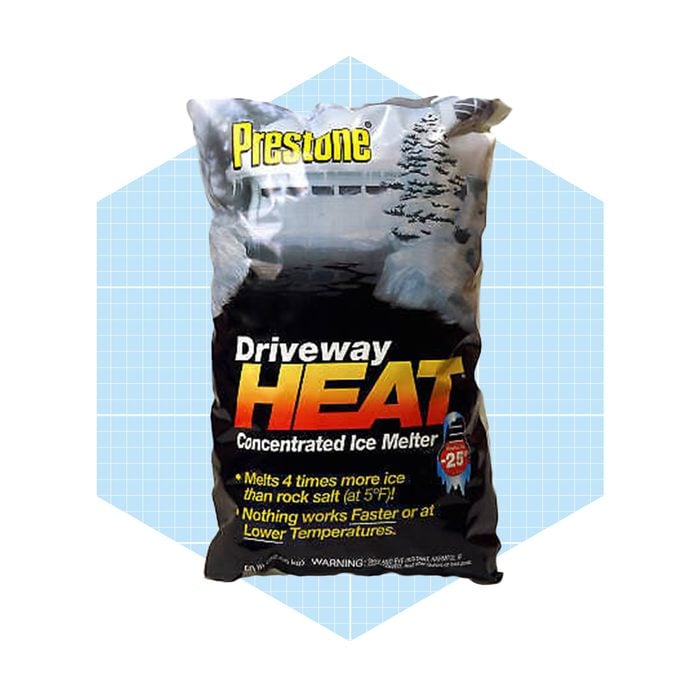 via merchant
via merchant
The best way to protect your concrete driveway is to find an ice melt that will maintain the brine into temperatures below the lowest temperature you’re expecting. If it never refreezes, you won’t have any issues!
Driveway Heat is a calcium chloride-based ice melt that maintains the brine down to -25 degrees. (If you expect temperatures below that, we’ve got you covered later in this list!) Note: Ice melt is never recommended for concrete less than 12 months old. So that first year, you should plan on clearing ice with a shovel, plow or snow blower.
Pros
Cons
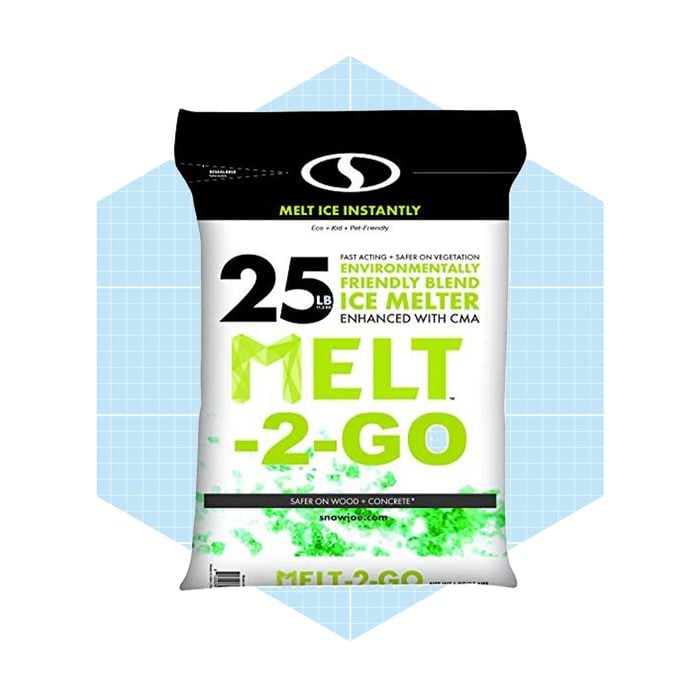 via merchant
via merchant
Ice melt can damage wood porches and steps in different ways. Treated or sealed wood is more water resistant, but it still isn’t impervious to the freeze/thaw cycle. In addition, wood porches are held together by metal fasteners, many of which can be damaged by the salty brine produced by ice melt.
Wood porches feature one more complication: Wet wood is slippery! Calcium chloride melts draw in moisture. That’s normally not a problem on concrete, but they can make slick wood even more treacherous.
A better choice for wood surfaces are ice melts that contain CMA (calcium magnesium acetate). CMA isn’t nearly as harmful to metal surfaces as other types of ice melt salts, meaning that the fasteners holding your deck together won’t deteriorate. Because CMA is consumed by naturally-occurring bacteria, it also poses less of a hazard to surrounding plant life than rock salt.
The downside is that CMA is significantly more expensive than most other ice melts. Look for a blended CMA melt, like Snow Joe Melt-2-Go, that combines CMA with other, more corrosive salts. The result is a more wood-friendly ice melt that doesn’t break your budget. You can also help keep costs under control by clearing as much snow and ice by hand as you can.
Pros
Cons
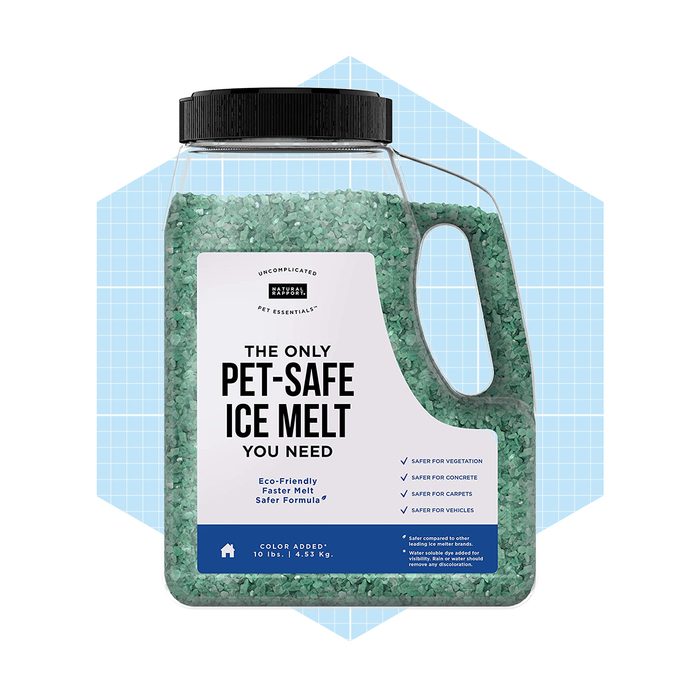 via merchant
via merchant
If you’re looking for an ice melt safe for your pup’s paws, the Natural Rapport Pet-Friendly Ice Melt is highly rated by pet owners. The eco-friendly formula is safer for your pets, children and flooring when little feet or paws track some in the house. It’s also less harmful to lawns and grass than other ice melts.
While you should always do your best to limit the exposure of kids and pets to ice melt, this natural product is a good choice for backyard porches that see a lot of playtime.
Pros
Cons
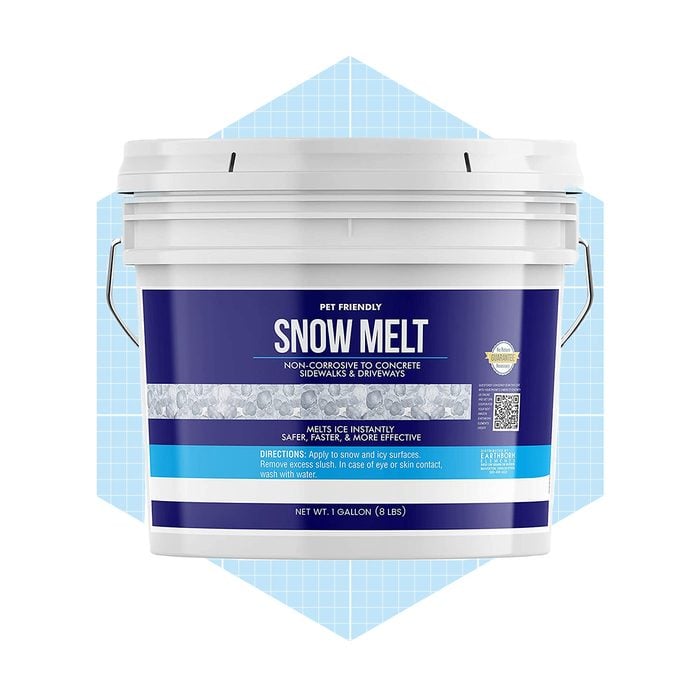 via merchant
via merchant
Composite decks are resilient and long lasting, but they’re not invulnerable to abuse. Check your decking manufacturer’s website to see their recommendations for winter care. Generally speaking, less corrosive ice melts such as these calcium chloride pellets from Earthborn Elements are a good choice for composite decks.
Even if you’re not sure what type of decking you have, there are a few guidelines to keep in mind. First, don’t mix sand or other abrasive with the ice melt, as they can leave scratches on the deck boards. (This is more of an issue with composite than wooden deck boards.) Second, if you use a shovel to clear snow, push along the length of the deck boards rather than across them. Lastly, clear any leftover ice melt with a good sweeping from a stiff-bristle broom.
Keep in mind your surrounding environment when you sweep. Much of the ice melt will fall between the deck boards, where it shouldn’t harm any plant life. But if you have a nearby flower bed, avoid any potential seepage by scooping the brine mix and tossing it into the trash. Find out whether you can leave snow on your deck.
Pros
Cons
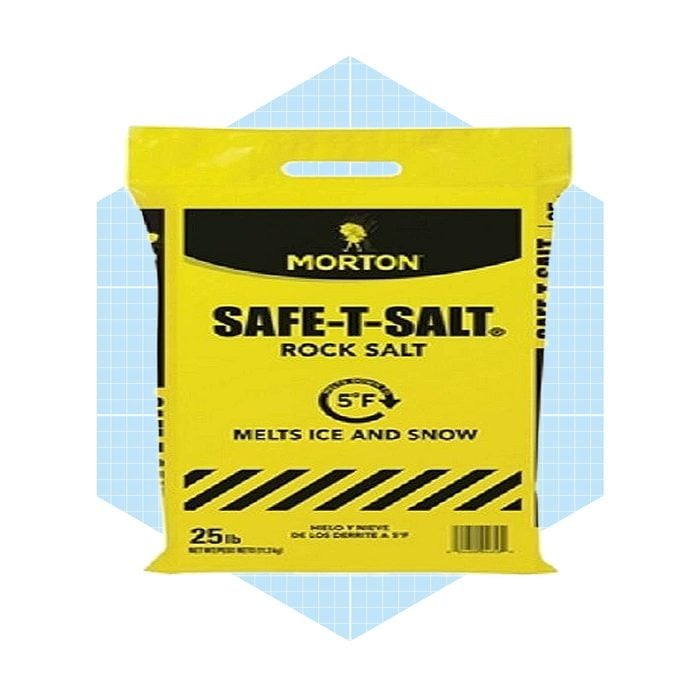 via merchant
via merchant
Rock salt has a high potential for damaging porches and driveways, but it works in mild temperatures, when it can be used sparingly. It’s also traditionally one of the most affordable ice melts available, with a base cost that’s usually lower than other non-sale options.
Classic rock salt like Morton’s Safe-T-Salt is cheap, readily available and works to a low temperature of 5 degrees. Be conservative when spreading it, and avoid shoveling any slurry onto fragile plants or grass. The best bet is to take a layered approach: Apply a little and wait to see if you need more. If you end up with excess, scrape it up and place it in the trash.
Pros
Cons
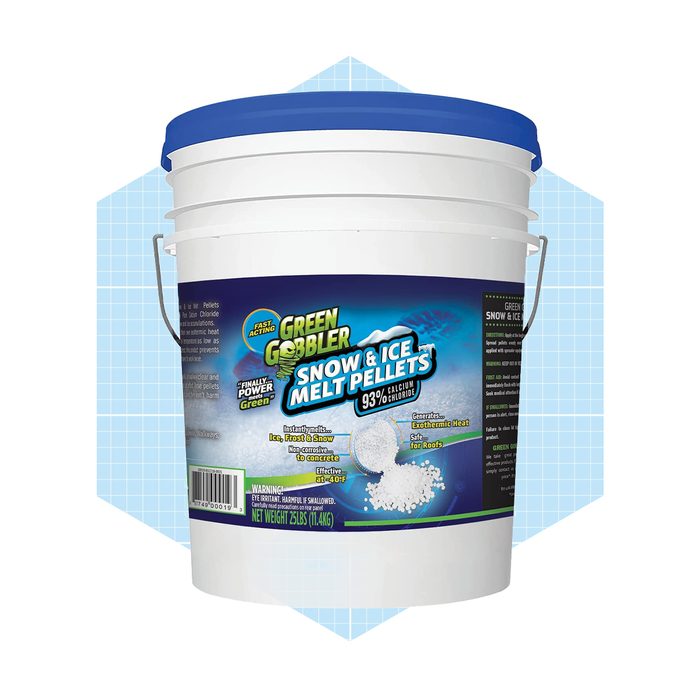 via merchant
via merchant
If you live in an environment with extreme cold, definitely take that into account when shopping for ice melt. Because ice melts work by lowering the freezing temperature of water, when the ambient temperature is cold enough, the ice melt simply won’t make a difference.
However, some ice melts have an “exothermic” reaction, which means they actually generate heat when interacting with snow and ice. That extra bit of heat means that they can be more effective in far colder temperatures. Green Gobbler is a good example of an exothermic ice melt. According to the manufacturer, it has an effective temperature range down to -40 degrees!
Pros
Cons
As shopping experts, our only job is to help you find a winning product. We start with the research and reporting basics—what products are made of, what they look like and how much they cost—to ensure that we’re only recommending the buys that are worth your time and money. Then, we research the features that speak to the product’s quality, taking advice from industry insiders and subject matter experts on what makes a product a smart value (or worthy of a splurge). Finally, we do the work of combing through user reviews to see how real people interact with the product, and if it stands up to the test.
Ice melt works by lowering the melting temperature of water. So if it’s 20 degrees outside and your melt product lowers the freezing temperature down to 0 degrees, then the ice around your home will melt. However, it will refreeze if the temperature dips below zero. And that freeze/thaw cycle can damage your concrete driveway.
Look closely at concrete and you’ll see that it’s covered with countless tiny holes. Ice melt creates a salt and water mixture called a brine, which fills those holes. If it refreezes, it expands, widening the holes and creating pitting and scaling. This is most common when using ice melts such as rock salt (sodium chloride) where the brine refreezes in relatively mild temperatures.
The best time to put ice melt down is before it snows or freezes. This keeps ice from sticking to surfaces before they are covered. You can also apply ice melt on top of ice, although you should try to shovel away as much snow as possible beforehand.
Generally, it takes about 25 to 30 minutes for ice melt to being working. Applying ice melt prior to a storm is ideal.
Less is more when it comes to ice melt. Applying excessive amounts of ice melt does not speed thawing or make the ice melt more effective. Excess amounts can, however, cause damage to surfaces and pets.
Typically, you’ll want to use a half-cup of ice melt per square yard, but every ice melt product is different. Read the application instructions and ingredient list before using the product.